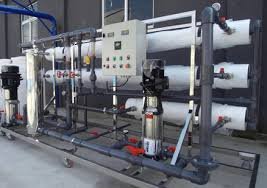Biocontamination Control Techniques for Purified Water System

Biocontamination Control Techniques for Purified Water System
1. Introduction
Purified Water (PW) systems are highly susceptible to microbial contamination because they provide a favorable environment (nutrients, temperature, and surfaces) for microbial growth and biofilm formation.
Effective control strategies are essential to maintain compliance with pharmacopeial standards (USP, EP, IP) and GMP requirements.
2. Sources of Biocontamination
-
Raw water (inlet source)
-
Dead legs in piping
-
Stagnant or low-flow zones
-
Inadequate sanitization
-
Filter or resin beds (activated carbon, softeners)
-
Poor maintenance of storage tanks and distribution loops
3. Control Techniques
a. Design & Engineering Controls
-
Use 316L SS with electropolished surfaces or high-grade PVDF for distribution piping.
-
Maintain sloped pipelines (1:100 slope) to avoid stagnant water.
-
Eliminate dead legs (keep <1.5 × pipe diameter rule).
-
Ensure continuous recirculation of PW (velocity ≥1.0 m/s) to prevent stagnation.
-
Use sanitary diaphragm valves and orbital welding for hygienic joints.
-
Storage tank design: conical bottom, spray ball for CIP, hydrophobic vent filters.
b. Operational Controls
-
Maintain distribution temperature:
-
Hot PW (65–80 °C) preferred for biocontrol.
-
If cold PW used, ensure ozonation or UV sanitization.
-
-
Continuous circulation through the loop to prevent biofilm growth.
-
Periodic flushing of rarely used points.
-
Strict SOP for sampling, cleaning, and preventive maintenance.
c. Sanitization Techniques
-
Thermal sanitization:
-
Hot water (≥80 °C) circulation for a defined time.
-
Steam sanitization (superheated or clean steam) of loops and tanks.
-
-
Chemical sanitization:
-
Sodium hypochlorite, hydrogen peroxide, peracetic acid, ozone, or mixed oxidants.
-
Rinse thoroughly after sanitization to remove residuals.
-
-
UV sanitization (254 nm): Installed in recirculation loop to inactivate microbes.
-
Ozone sanitization: Continuous or intermittent dosing (effective at low concentrations, decomposes back to oxygen).
d. Monitoring & Control
-
Online monitoring of TOC, conductivity, and temperature.
-
Routine microbiological monitoring (total aerobic count, endotoxin testing).
-
Use trend analysis to detect early microbial proliferation.
-
Periodic qualification (IQ, OQ, PQ) of water system.
4. Preventive Practices
-
Validate sanitization frequency (weekly, biweekly, or monthly depending on system design).
-
Train personnel on proper sampling and hygiene.
-
Establish action/alert limits for microbial counts (e.g., <100 CFU/mL for PW).
-
Immediate investigation and CAPA for excursions.
-
Periodic replacement of resins, carbon beds, filters, and UV lamps.
5. Conclusion
Effective biocontamination control in PW systems requires a combination of:
-
Robust design (sanitary materials, slope, no dead legs),
-
Continuous recirculation,
-
Regular sanitization (thermal/chemical/ozone/UV), and
-
Ongoing monitoring with trending.
This ensures that the PW consistently meets pharmacopeial microbiological and endotoxin limits, safeguarding product quality and patient safety.
🎓 Discover one of the best Pharmaceutical Microbiology course available —click below to explore the course that’s shaping future Microbiology course skills.

